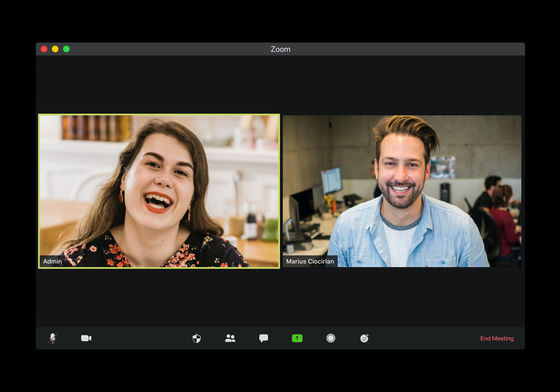Online meetings suppress the transmission of neural signals more than face-to-face conversations

Zooming in on our brains on Zoom | YaleNews
https://news.yale.edu/2023/10/25/zooming-our-brains-zoom

Separable Processes for Live “In-Person” and Live “Zoom-like” Faces | Imaging Neuroscience | MIT Press
https://direct.mit.edu/imag/article/doi/10.1162/imag_a_00027/117875/Separable-Processes-for-Live-In-Person-and-Live
On October 25, 2023, Imaging Neuroscience, an open access non-profit journal focused on imaging the brain and spinal cord of humans and other living things, published a series of interviews, both in-person and using online video calling tools like Zoom. The results of a study comparing brain activity at different times have been published.
Social interaction is the basis of all human societies, and our brains perform detailed processing to read dynamic facial cues when we meet people. Previous studies have used imaging tools to track brain activity during social interactions, but most existing studies have focused on single individuals. . Therefore, Hirsch and his research team are developing a tool to analyze brain activity in real time using imaging when two people are interacting.
Using this tool, Hirsch and his team measured the brain activity of people actually communicating face-to-face, as well as during video calls using the video conferencing tool Zoom. . After that, we compared ``brain activity during face-to-face conversation'' and ``brain activity during Zoom conversation'' and found that the strength of neural signals was dramatically reduced when using Zoom compared to when speaking face-to-face. It has become clear.

Increased neural signal strength in people who had face-to-face conversations was associated with increased gaze duration and pupil diameter, suggesting increased arousal in the brain. The research team pointed out that the increase in the strength of neural signals in the brain during face-to-face conversations is related to improved
In addition, the research team found that people who had face-to-face conversations had more coordinated neural activity in their brains. This suggests an increased reciprocal exchange of social cues between interacting people.
Hirsch said of the study's findings: 'Overall, it seems like the dynamic social interactions that occur naturally during face-to-face interactions are less noticeable or non-existent during Zoom interactions. This is a really powerful It's a great effect.'

Regarding the results of this study, Mr. Hirsch points out how important face-to-face interaction is, saying, ``This study shows that people's performance is better when they are actually meeting people face-to-face than on Zoom.'' 'We found that their brains are more active. Zoom seems to be an inadequate social communication system compared to face-to-face conversations.'
Related Posts:
in Software, Web Service, Science, Posted by logu_ii






